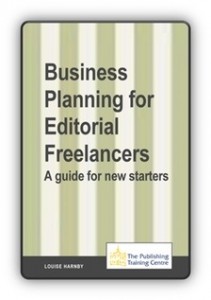This blog now has dozens of posts that will help the new starter. Click the Starter Kit for Editors category to see them all, or start with these essentials:
Finding Work | Office Essentials | Background Skills | Is Editing for You? | How to Become an Editor | Estimating Your Pace | Setting Fees | Starter Kit for Editors category
Before you edit for pay, learn the ropes: [updated Jan 2023]
1. Read these
 Edit Like a Pro |
 Business Planning for Editorial Freelancers Business Planning for Editorial FreelancersFollow the advice in this book and you’ll be off to a great start. Also recommended for existing freelancers who are feeling either stuck or ambitious. Or both, even. Read my review. |
 This sets out what tasks editors should do when performing various stages of editing. There are no standards “accross the industry”, but this is a terrific starting place, and they are gaining some ground. (2016 update) |
 Quick Fixes for Business Writing: An Eight-Step Editing Process to Find and Correct Common Readability Problems Quick Fixes for Business Writing: An Eight-Step Editing Process to Find and Correct Common Readability ProblemsThis is the print version of EAC’s most venerated seminar. An excellent system that provides order and sense when faced with an insurmountable edit. Available in print, as an ebook via Google Books, and in poster form from EAC. Seminars held across Canada or by request. |
 So, you want to be an editor, the Pathways to Success poster and the Career Builder worksheet. So, you want to be an editor, the Pathways to Success poster and the Career Builder worksheet.Quick guides to what makes an editor, where they work, what the career is like, and how editors got into it. Available free online, as a webpage or PDF, or at any Editors Canada event. |
2. Read more
You’ll need to learn at least one general purpose style guide, and any that is specific to your subject or client group. For example:
The Chicago Guide to Copyediting Fiction, by Amy J. Schneider
Editing Canadian English (ECE) editingcanadianenglish.ca
The Canadian Style (and online: The Canadian Style)
The Canadian Press Stylebook, plus Caps and Spelling
Publication Manual of the American Psychological Association
And complete the exercises in The Copyeditor’s Handbook.
3. There’s more
Read my original post about how to become an editor. The above just gives you a glimpse at the tip of the iceberg. KOKedit has compiled a much longer list of resources. I’d even call it comprehensive.
Read about the temperament that makes a good editor — one of reason, not hyper-correctness, according to James Harbeck (Sesquiotic).
Read the blogs of a variety of editors. Their insights into daily life and challenges — and their advice — will give you a good sense of what you’re in for and maybe even help you avoid some of the mistakes they’ve made. Start with this here blog, of course, and with my courses.
I’m certain you will find more resources there to help you on your journey. Add your favourites in the comments.
Curious about a day in the life of an editor?
Start with this free sneak peek at proofreading in which a proofreader (me) explains their thinking as they live-proof a single page of a book. The drama! The intrigue! The slowwwww paaaace…



